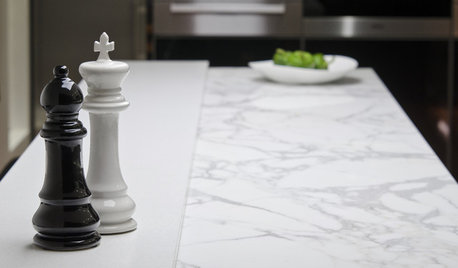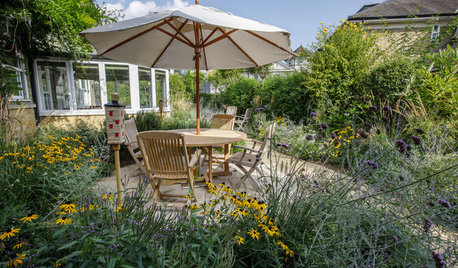Sea Berry (Buckthorn) in pots? Varieties?
altadenamara
15 years ago
Related Stories

GARDENING GUIDESGreat Design Plant: Sambucus Nigra
Common elderberry is a highly adaptable shrub from the eastern U.S., with berries galore for wildlife and humans alike
Full Story
EDIBLE GARDENSHow to Grow Your Own Sweet Summer Crops
This guide will help any gardener get started on growing the freshest warm-season veggies and berries for summer
Full Story
FARM YOUR YARDHouzz Call: Home Farmers, Show Us Your Edible Gardens
We want to see where your tomatoes, summer squashes and beautiful berries are growing this summer
Full Story
GARDENING GUIDESPrunus Virginiana Thrives Under Deciduous Trees
Plant chokecherry for showy white flowers favored by native bees in spring, and to provide nesting habitat and food for birds
Full Story
GARDENING GUIDES6 Plants That Beat Butterfly Bush for the Wildlife Draw
It's invasive, a nonnative and a poor insect magnet. Check out these better alternatives to butterfly bush in the garden
Full Story
GARDENING GUIDESGrow Your Own Privacy: How to Screen With Plants and Trees
Use living walls to lower your home and garden's exposure while boosting natural beauty in your landscape
Full Story
FRONT YARD IDEASBefore and After: Front Lawn to Prairie Garden
How they did it: Homeowners create a plan, stick to it and keep the neighbors (and wildlife) in mind
Full Story
SUMMER GARDENINGHouzz Call: Please Show Us Your Summer Garden!
Share pictures of your home and yard this summer — we’d love to feature them in an upcoming story
Full Story
KITCHEN COUNTERTOPSKitchen Counters: High-Tech Solid Surfaces Make Maintenance Easy
Sculpted by heat and nonporous by nature, solid-surface countertops bring imagination and low maintenance to the kitchen
Full Story
LANDSCAPE DESIGN4 Tips for Creating a Small Garden That Welcomes Wildlife
Win over birds, bees, butterflies and neighbors with these design strategies
Full StoryMore Discussions







jellyman
altadenamaraOriginal Author
Related Professionals
Maple Valley Landscape Architects & Landscape Designers · Richmond Heights Landscape Architects & Landscape Designers · Summit Landscape Architects & Landscape Designers · Wixom Landscape Architects & Landscape Designers · Barrington Landscape Contractors · Byram Landscape Contractors · Cary Landscape Contractors · Choctaw Landscape Contractors · Coram Landscape Contractors · Morrisville Landscape Contractors · New Baltimore Landscape Contractors · Paso Robles Landscape Contractors · Vermilion Landscape Contractors · Wanaque Landscape Contractors · Yukon Landscape Contractorslarry_gene
altadenamaraOriginal Author
olga_6b
markinu
larry_gene
markinu
chervil2
les1234
larry_gene
skyjs
canadianplant
trianglejohn
Chris Weld
trianglejohn
nmfruit
danzeb
skyjs
altadenamaraOriginal Author
lucky_p